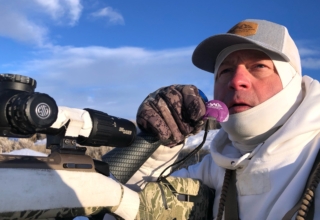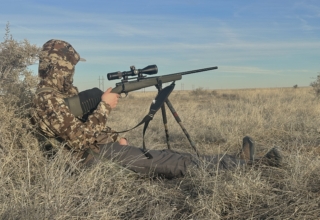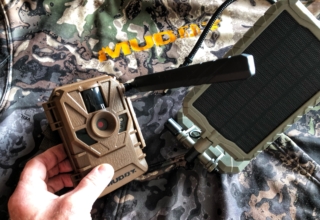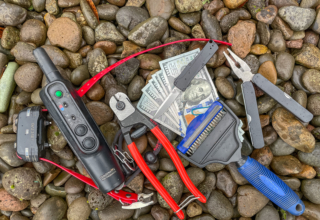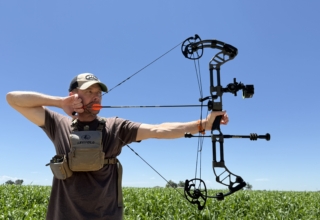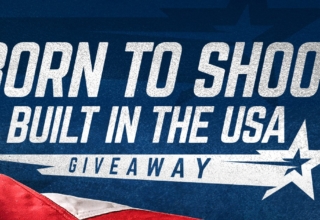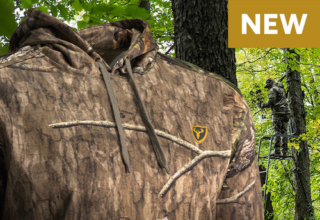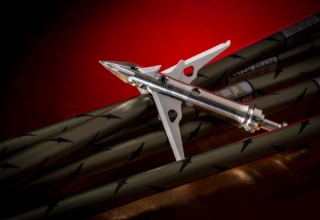Coyote hunting, like all hunting, has become a gear-laden pastime; however, if you’re a song dog newcomer and want to test the waters, you can jump into the coyote-calling ocean with little to no greenback investment.
by Mark Kayser
In my early years, my enthusiasm for the coyote hunting game would start ramping down in February. Why? No one else was hunting them, and stopping was common practice. Coyote interest dropped off moving into February due to breeding season and a depreciation of pelt value. Coyotes, and other predators, rub during the breeding season. This activity creates wear spots on their hides, plus with the lengthening daylight hours, shedding soon follows. Pelts no longer have value.

If you follow fur prices, you realize that the ability to recoup predator hunting expenses from selling furs could be just memories for old-timers (like me) to share with the newcomers to the sport. I can still recall selling coyotes whole for $100 and remember skinned prices at nearly $200 for a big, northern coyote. Today you are lucky to get $20 for an unskinned coyote. One buddy said they averaged $17 for a weekend haul, and it still did not cover fuel expenses.
Doom and gloom aside regarding the fur market, we rarely hunt for economic gain these days, and if you want to try coyote hunting, now is a good time, and here is why. Read on to the end, and I will share how you can jump into coyote hunting with minimal or no expense.
Coyote Lives Matter
Coyote lives matter, or the lack of coyote lives matter, to be more precise. In the first half of the 20th century, predator hunters were good at their job, and they kept coyotes, wolves, mountain lions, and foxes at reduced numbers via methods mostly no longer allowed today. Even with this intense pressure, species like coyotes still managed to eke out a living without disappearing like the larger predators.
In short, removing coyotes from the landscape takes a lot, but any you remove, especially now through spring, could give wildlife some breathing room for recruitment success. Primarily think about fawns. In the spring, coyotes adjust their hunting to focus on newborn fawns. Several studies tracking both coyotes and fawns, along with scat analysis, indicate a spring coyote diet consists of anywhere from 70 to 80 percent fawns if deer numbers allow. They will still dine on rodents and small game, but the data does not lie. If you want to save a fawn, knock down a coyote late in the winter and early spring.
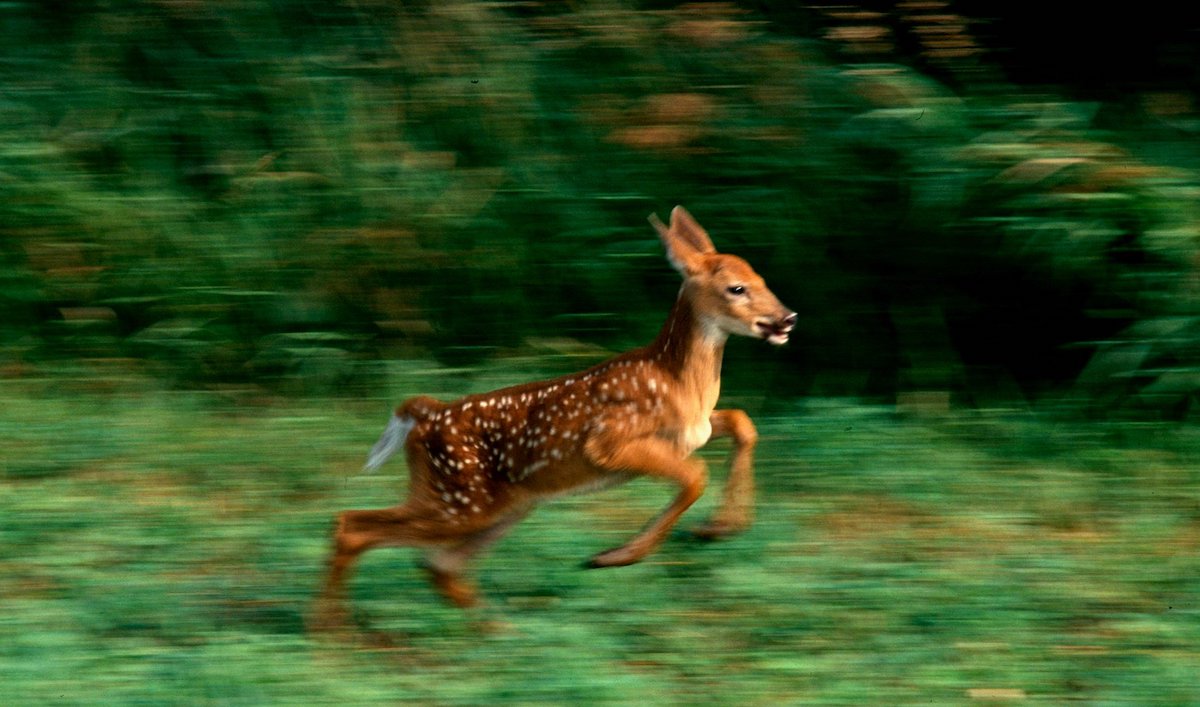
By removing a coyote now, you may have an effect. You could land a blackjack and shoot a pregnant female, thus removing six or more coyotes from an area. You could remove a male with the possibility it roams away looking for a new mate. Any removal disrupts territory, and with coyotes likely establishing a denning environment, your area may be a bit coyote-safer until pup dispersion later in the summer. You will never eliminate all the coyotes, but creating some breathing room could give an extra fawn or two the time it needs to perfect evasion skills.
Finally, purist coyote hunters abandon the chase in the late winter and early spring. Shed antler hunting, turkey hunting, and even March Madness brackets begin attracting the interest of many. You will likely discover fewer coyote hunters afield.
You’re A Deer Hunter, Right?
So, you think you might be interested in coyote hunting yet this year? You already have the basics to get the job done. You are a deer hunter, right? Depending on the data you believe, there are anywhere from nine to 11 million deer hunters in America. Nevertheless, if you hunt, odds are you deer hunt and have a source of deer gear.
The same equipment you use to pursue deer works for coyotes. When I started coyote hunting, I followed that path. My grandma gifted me her Remington 700 in .243 Winchester, and I knocked the iron sights off the stubby-barreled rifle and mounted a Tasco scope on it for deer hunting. It soon took on coyote duties at a pitiful success rate. Nevertheless, it served a dual purpose with the 3×9 optic teamed with my old Bushnell 10-power binocular. By adding in a Herter’s predator call for $10, I was outfitted.
I fell into my latest coyote rifle purely through work, and it fits into the same deer hunting category. Assigned to test the CVA Cascade XT, I finished the assignment, and because of its accuracy, MOA guaranteed, I held onto it for the winter. More importantly, as a fan of accurate rifles that generally weigh north of 10 pounds, I appreciated the 7.25-pound bare-rifle weight. Some weight savings arrive from barrel fluting, which is ideal for cross-country sets. The Cascade XT comes in eight calibers ranging from the versatile varmint caliber of .223 Remington to the pile-driving .450 Bushmaster. My rifle was sent in 6.5 Creedmoor with a suggested price of $749.99.

Of course, the 6.5 Creedmoor is a bit overkill for coyotes, but so is the .243 Winchester and my 7mm Remington magnum that I also teamed with to bust Wile E. in my B team years. Look for a future review of the CVA Cascade as I rack up more miles with this budget team member.
Other rifle manufacturers, such as Bergara, Ruger, Mossberg, and more, have lines of affordable rifles that do not break the bank but deliver accuracy. At a minimum, you should downsize from a deer-heavy bullet to a smaller-grain option in a particular caliber. Hornady manufactures a 95-grain V-Max bullet for the 6.5 Creedmoor and a 125-grain SST bullet for a .308 Winchester. Federal Fusion, and even the Browning line are also reasonably affordable bullet choices.
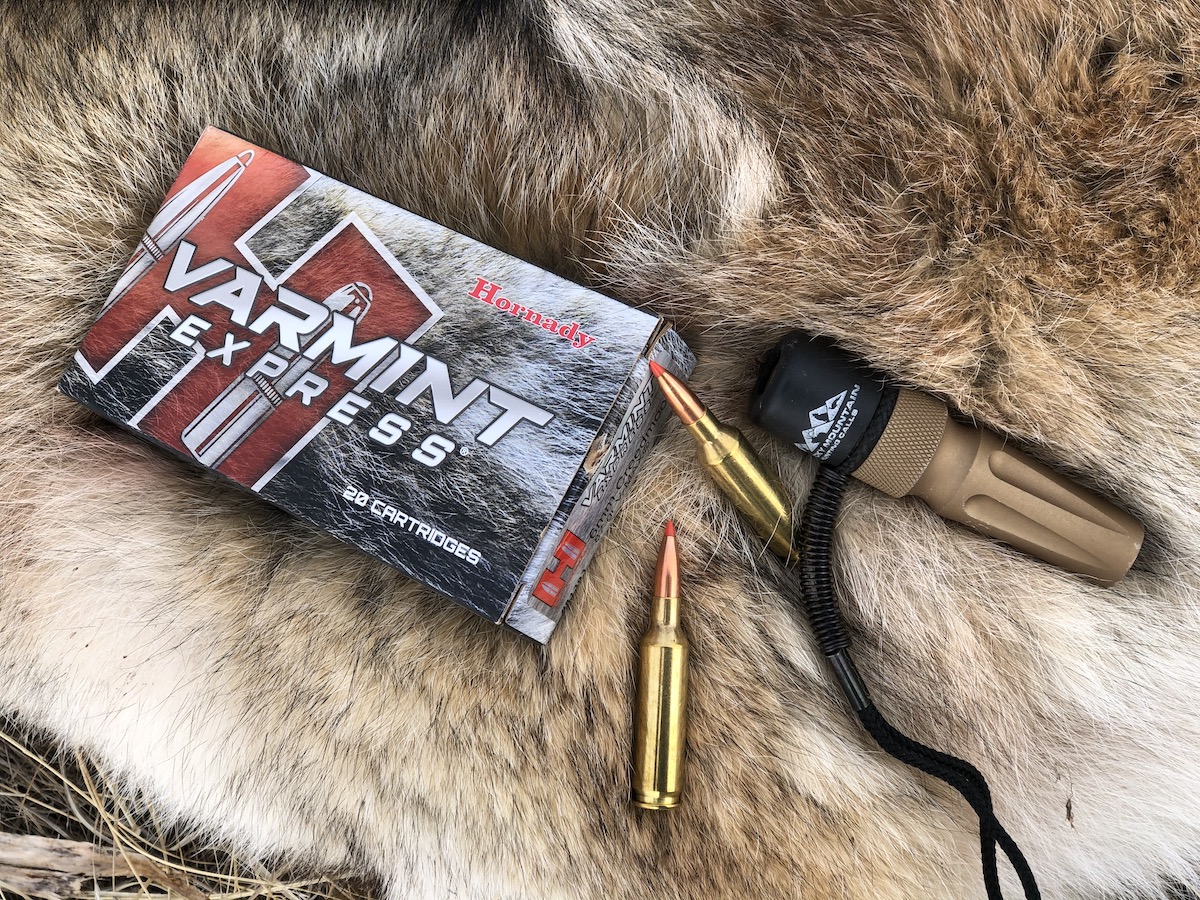
As for calls, a couple of affordable hand calls and a howler keep you out of bread lines. Even today, I always carry my Stealth Yote Howler, a diaphragm, and a .223 Rodent Distress Cartridge Call, all for less than $50 from Rocky Mountain Hunting Calls. It gives me calling flexibility, plus lightweight cargo for long hikes into coyote country. Even though I have a suppressor on my Cascade, you do not need it. For $1, you can get foam earplugs to preserve your hearing. Add in your favorite camouflage, and a reasonable-quality binocular, and your deer hunting gear has coyote targeting capabilities.
Time To Trespass
It would help if you had a strategy for the weeks ahead, and it is simple: trespass. Do not trespass on that angry neighbor’s land who is always toting a double-barrel shotgun. You need hunting permission, but then trespass in likely coyote territory. If you suspect coyotes are preparing a den in the vicinity, all the better. Ask farmers and ranchers where they have seen and heard coyotes to help you sneak into a home domain.

After you mark a handful of likely hangouts on your Hunt Stand hunting app, your game plan is to sneak in stealthily without being detected. Find a good vantage point with the wind in your favor and rip a series of lone howls. Four to ten crisp, short, lone howls signify a coyote looking for other coyotes. Wait 30 to 45 minutes and repeat. After an hour, move on to your next stand if nothing appears. Separate your stands by a minimum of a mile or more.
Coyote hunting used to be a winter-only sport, but not anymore. If your idea of March Madness includes sending projectiles across a gloomy landscape to save a fawn, give coyote hunting a go. The field will be less crowded than any NCAA March Madness auditorium.


